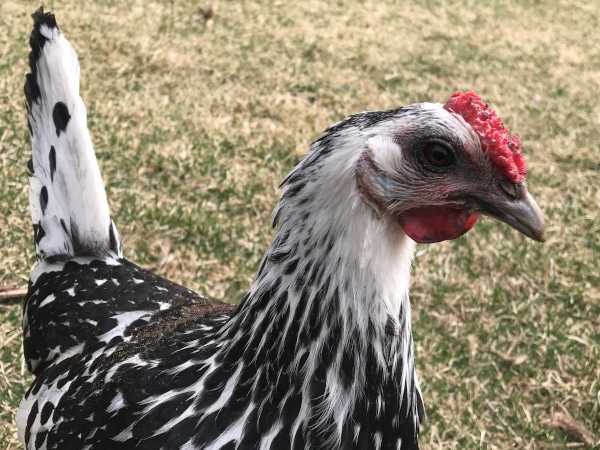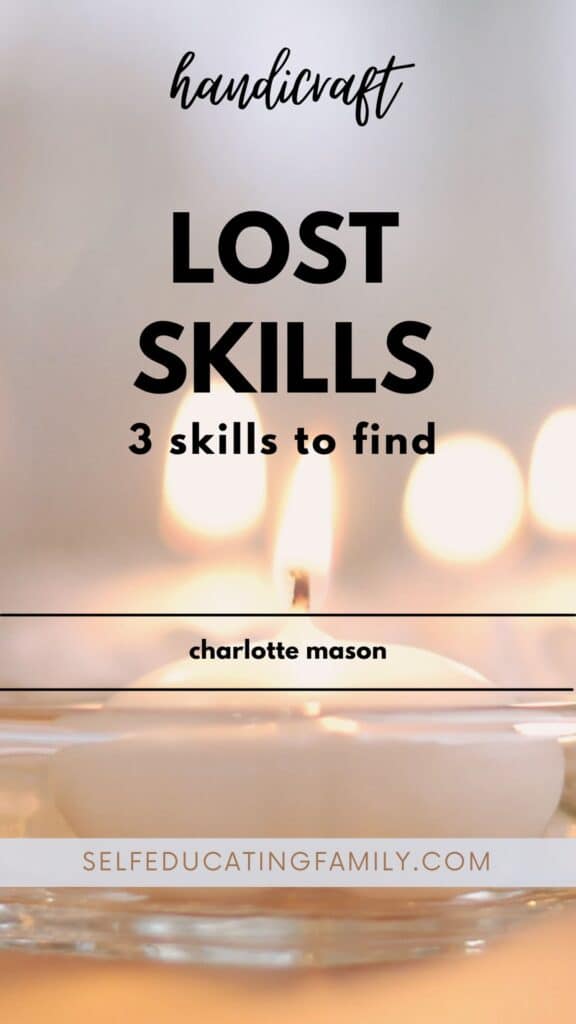What’s inside: A look at 3 lost skills that are easily in your reach for teaching your kids.
This post may contain affiliate links. If you find my content valuable and make a purchase through one of my links, I will earn a commission at no cost to you, which helps me keep this blog going so I can help you even more! I recommend products I trust and/or use myself, and all opinions I express are my own. Read the full disclaimer here.
Lost Skills to Learn & Teach Your Kids
Have you ever thought about the vast number of different handicrafts and wondered what to teach your kids?
Today, we’ll look at the so-called “Lost Skills” and see what skills might be fun and useful to your homeschool.
What are Lost Skills? A Story
First – what exactly are lost skills?
The term applies to normal everyday skills that maybe your grandparents had that you don’t. Somehow, no one ever taught you. And really, we are talking about generational issues across society more than individual situations.
For instance, if I look at my family, my grandparents would have been born between 1880 & 1900. This was the age of industrialization and one set of grandparents had major skills, but the other set were city people and had already lost skills like gardening, food preservation, knowing how to use and maintain hand tools, etc.
So specifically for me, my mom would have been unable to teach me anything like sewing, canning, or knitting because she had already “lost” most skills because her parents didn’t know them. Although she did have a chicken in the city one summer – her memories are a little vague now but she recalls having to carry the chicken on the NYC subway. Not sure why.

On the other hand, my dad was very capable & knowledgeable in carpentry, mechanics, engines, and even upholstery & cooking – YET he never taught me. So the skills were “lost” to me. I learned cooking, sewing, & upholstery in home ec class, woodworking in shop class, and mechanics in college, with food preservation & gardening as part of my on-going self-learning.
So not only do your parents have to possess the skills, but they have to teach them to you.
In today’s world for homeschoolers, if you don’t possess the skills, you can figure out a way to use a tutor, co-op, or expert (or even Mr. Google) – the equivalent of Home Ec class!
Examples of Lost Skills
I went to 2 very different websites to find more examples of “lost skills” to make this list.
- The first site was from a photo-sharing app site so it had some lovely pictures of kids doing skills: Tiny Beans | Lost Life Skills to teach Your Kids
- The second site was more of a prepper type of site – so they seem more knowledgeable about what really is a lost skill: Urban Survival Site | 27 Lost Survival Skills Your Ancestors Had
The Long List
I combined their lists of “lost skills” to give you a flavor of what people mean by the term. Lost skills are slightly different from practical skills or “life skills” to teach your kids. For instance, cooking skills are not lost, but some aspects of it are, like canning from your garden.
So here is the combined list of lost skills:
- Basket weaving
- Blacksmithing
- Butchering
- Candle Making
- Chair caning
- Crochet
- Fire starting
- First Aid
- Fishing
- Hunting
- Knitting
- Knot Tying
- Making Jam
- Navigation
- Pickling
- Quilting
- Sewing
- Shoe Making
- Soap Making
- Tanning
- Trapping
- Whittling
- Wood working
I don’t agree that all of these are really lost, but in general, a lot of grandparents did not teach these skills to us.
3 Lost Skills from both lists!
What was interesting in looking at 2 very diverse lists was that 3 skills came up on both lists.
- Sewing
- Candle Making
- Soap Making
Let’s look at these 3 skills and see if they work as handicraft.
How to approach a “lost skill” for handicraft
1. Is the skill lost to you?
- If so, then you’ll have to learn too.
- If not, you’ve got the green light to make sure it’s not lost on your watch for your kids and the next generation!
Sewing
Sewing is perhaps the most accessible of the so-called lost skills. I would have never considered it lost, but if you begin to think about it, it’s probably endangered at the very least.
A hundred years ago, I would say 85% of people probably knew how to sew on a button. Today, most people probably just buy a new shirt if the missing button is in an inconvenient location.
That goes for mending holes, hemming pants, and other types of hand sewing.
Machine sewing was commonplace also. Today, tailoring is still a viable occupation for men (as in men’s suits) and women (as in alterations & running sewing shops). But tailoring is definitely on the wane.
A good “intro to sewing” should be based on the age of the child. In Charlotte Mason schools, children in Form I (1st or 2nd grade) would learn their “stitches” while older forms would be capable of making small items like doll’s clothing or baby clothing, garments for charitable giving, and mending items from the wash.
Learning stitches with embroidery patterns is a good beginning – the needles and thread can be bigger and you can get pre-printed patterns at hobby shops. Some of the kids in my homeschool group sewed more complicated items over the years like hooded cloaks.
Like some of the afternoon handicrafts, sewing was revisited many times over the years in Charlotte Mason schools. Probably because it is such a useful skill. Hand sewing also quite good for development of fine motor skills and eye-hand coordination.
What do you think? Is sewing “lost” yet? Either way, it’s a great one to include in your handicraft.
Candle Making
Candle making is relatively easy as a handicraft to get started with. During our semester on “Chemical Crafting,” we included candle making – ice candles and regular votives – along with glass etching (to make a candle holder), and tin can lanterns.
We were working with a large group of children with a wide range of ages. The trick here is SAFETY. You are working with burning hot wax. Kids do rise to the occasion when doing “dangerous” crafting. We underestimate their ability for serious attention and care.
Warning: You have to know your kids. If there is a joker in the midst of your group or a careless child, then you need to take special precautions. And keep the toddlers well away or occupied as you would in your kitchen. It’s like knife skills – kids do better if they are taught proper usage, than if they are never taught.
I have a favorite candle-making tutorial which is from Black Tie Barn. They are a candle-making shop dedicated to educating candle-making enthusiasts.
He has a few tools you don’t necessarily need like his candle-making pouring pot – we just bought a used pot from the thrift store. You will need wicks and things or a small beginner’s kit.
Black Tie Barn also has a Video on general candle-making 101
Soap Making
Here’s another excellent handicraft. General soap making is like following a recipe – only you used to have to use the caustic lye – another dangerous handicraft!
My husband has made soap the old-fashioned way but he was trained as a chemist. A note: you need dedicated soap-making equipment – like a dedicated soap-making-only crockpot (think thrift store) and silicon molds.
If you are nervous about using lye, which most crafters say is fine if proper precautions are taken (see warning above!), then you can use a meltable soap kit. Usually, they’ve saponified the ingredients for you so you just melt and pour into the mold.
I don’t think that is what is meant by the skill of soap making, but it’s an entry point to learn the skill.
For real soap making using lye, Simple Life Mom has a nice 7-step tutorial. And The Secret Life of Homeschoolers tested the method with a group of kids.
Final Thoughts
I hope this helps you select a “lost skill” for handicraft. These 3 are within your reach to teach for handicraft. There’s a lot to learn out there!
Need more tips?
The upcoming Life Skills Leadership Summit, February 24-28, 2025, has a fun session on a lost skill related to sewing. Check it out.
By the way, I’ll be giving two workshops at the summit so be sure to watch for me!
Grab your free Basic Pass here and you’ll get all sorts of real, PRACTICAL advice from 30+ expert homeschoolers, 50+ workshops & $600+ in Swag.
Keep Learning









